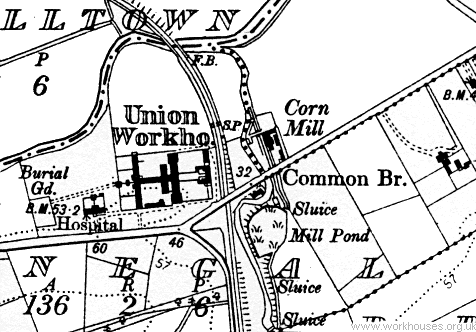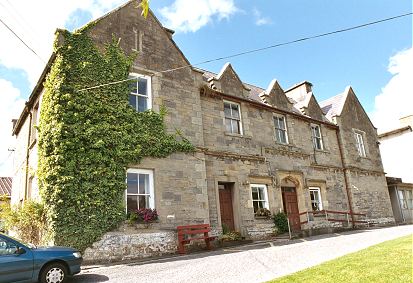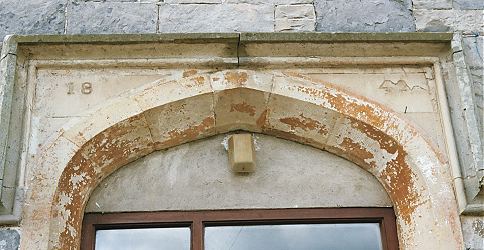Donegal, Co. Donegal
Donegal Poor Law Union was formed on the 7th November 1840, and covered an area of 245 square miles. Its operation was overseen by an elected Board of Guardians, 18 in number, representing its 11 electoral divisions as listed below (figures in brackets indicate numbers of Guardians if more than one):
Co. Donegal: Clogher , Donegal (3), Dunkineely (2), Gleneny, Inver (2), Laghy (2), Loughderg, Loughrask, Mount Charles (3), Tawnhawully, Templecarn.
The Board also included 3 ex officio Guardians, making a total of 21.
The population falling within the union at the 1831 census had been 32,928 with divisions ranging in size from Tawnhawully (population 1,076) to Mount Charles (6,133) and Donegal itself (4,764).
The new workhouse, built in 1841-2, was designed by George Wilkinson. It occupied a six-acre site at the west of Donegal and could accommodate 500 inmates. The cost of the building was £5,785 plus £910 for fixtures and fittings etc. It was declared fit for the admission of paupers on 15th September 1842, and admitted its first inmates eight months later on 21st May 1843. The workhouse location and layout are shown on the 1907 map below.

Donegal workhouse site, 1907.
The workhouse followed one of Wilkinson's standard designs, with a front block housing receiving rooms on the ground floor and a board-room on the first floor.

Donegal entrance block from the south-east, 2003
© Peter Higginbotham.

Donegal entrance doorway, 2003
© Peter Higginbotham.
A central block housed dormitories, school rooms, day rooms, kitchen and food serving rooms. The rearmost block, connected via the workhouse chapel, housed the workhouse infirmary.
In 1895, Donegal was visited by a "commission" from the British Medical Journal investigating conditions in Irish workhouse infirmaries. Their report listed a number of deficiencies including a lack of nursing supervision at night, and the miserable conditions for those in the lunatic wards whose care was in the hands of a pauper. Further details are available in the full report.
In August 1921, the Guardians decided to close the main body of the workhouse, abolish the offices of master and porter, and request that the nun in charge of the hospital inform the Board what salary she would accept to perform tha master's duries and her own. In November of the same year, 200 soldiers of the Irish Republican Army commandeered the workhouse for a period of intensive training.
The worhouse site subsequently became Donegal District Hospital. Only the entrance block now survives.
Records
Note: many repositories impose a closure period of up to 100 years for records identifying individuals. Before travelling a long distance, always check that the records you want to consult will be available.
- Donegal County Record Office, Three Rivers Centre, Lifford, County Donegal. Holdings include: Guardians' Minutes (1914-1923); Admission and discharges (1914-1916); Indoor Admission and Discharge Book (1916-1921); etc.
Bibliography
- Crossman, V (2006) Politics, Pauperism and Power in Late Nineteenth-century Ireland
- Gould, Michael H (1983) The Workhouses of Ulster
- Gray, P (2009) The Making of the Irish Poor Law, 1815-43
- Johnston, J (1996) Workhouses of the North West
- O'Connor, J (1995) The Workhouses of Ireland
Links
- None.
Unless otherwise indicated, this page () is copyright Peter Higginbotham. Contents may not be reproduced without permission.


